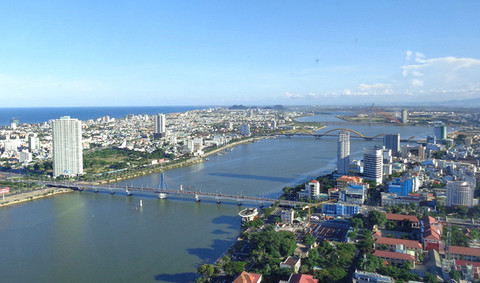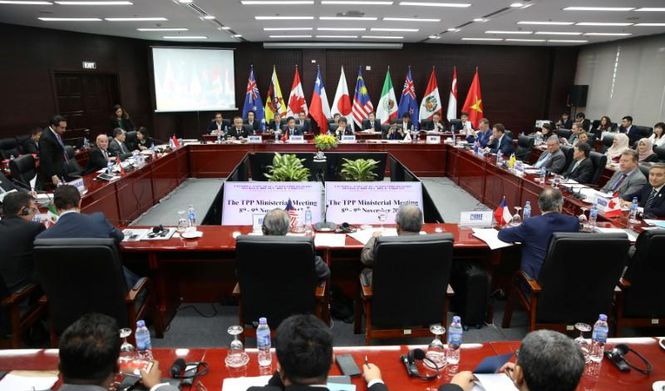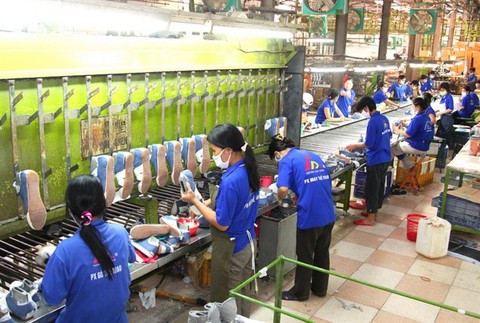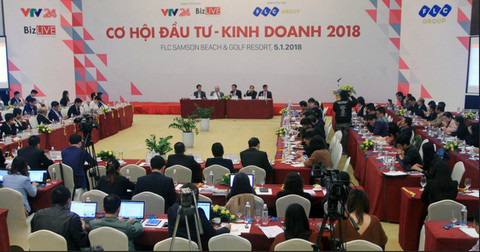Central city looks to 2050 development
Central city looks to 2050 development
The central city will prioritise boosting tourism, information technology (IT), sea port and logistics in 2018 to build a foundation for the next period of development in a sustainable way.

The city’s Party Secretary, Truong Quang Nghia, spoke at the Spring Dialogue with the participation of 500 representatives of businesses and local administration agencies on Thursday, stressing that the year 2018 will serve as a benchmark for the next development stage after 20 years of rapid growth between 1997-17.
He said the dialogue was an open discussion for local administration and businesses to share ideas ahead of the 2030-50 period.
“The city will take more positive measures supporting investors and businesses, creating more rooms for rapid and sustainable development with ‘green growth’ target,” he said.
Nghia added the city plans to develop the Lien Chieu Port as the first urban port and a key cargo port in Viet Nam, easing the overloaded Tien Sa Port.
Chairman of the city’s tourism association Huynh Tan Vinh said hospitality has emerged a key industry for the city’s budget in the last decade, earning VND19.5 trillion (US$862 million) – 23.72 per cent of Gross Regional Domestic Product (GRDP) – in 2017.
The ‘green’ industry also created 140,000 jobs, accounting for 25 per cent of the city’s labour force, and 28,000 rooms of hotel and resorts are available for hosting 10 million tourists in 2020.
Vinh, however, warned that the coastal city has faced the consequences of ‘too hot’ growth including a lack of fresh water in Son Tra peninsula and beach pollution due to untreated household waste water, while too many concrete sky-buildings and hotel projects have invaded natural forests and coastlines.
He also said the city should reconsider business supportive policies in order to strike a balance between big enterprises and small and medium-d businesses.
He said nightlight entertainment and shopping areas should be rapidly developed in the coming years.
According to the association, Da Nang hosted 6.6 million tourists, of which 2.3 million were foreigners, last year.
Korean and Chinese tourists accounted for 60 per cent of total foreign tourists. Tourism promotions should be done in Russia, India, Australia, the US, Europe and Japan.
Peter Ryder, CEO of the Indochina Capital property group, said Da Nang should continue its tourism development in a sustainable way and reduce the impact of construction on coastal buildings and projects.
He said improving the transparency should be considered in the development plan to attract foreign investment.
Satoru Takizawa, general director of Daiwa Viet Nam Company, said people and service are two strong points of Da Nang City in attracting investment.
He said too-rapid industrialisation in the city recently set challenges for foreign investors when they struggled to recruit a skilled labour force.
Takizawa, who is also chairman of the Japanese Business Association in Da Nang, said some investors plan to move their plants to other localities due to a lack of high-quality manpower.
“The city should improve high-quality labour training systems to supply enough quality manpower for investors, while encouragement policies should be offered for boosting vocational education centres,” he said.
Port and hi-tech park
Director of Da Nang Port Joint Stock Company Nguyen Huu Sia said Lien Chieu Port should be soon developed as a key port and logistic centre in central Viet Nam.
In boosting Da Nang as a driving force city for the central Viet Nam, the city has offered preferential policies to seek investment in the Da Nang Hi-Tech Park on a 1,100ha area in Hoa Vang District, 20km west of the city.
The park, which is envisioned as a hub for green and hi-tech investors and one of three major national multi-functional hi-tech parks in the country after HCM City and Ha Noi, has attracted 10 projects worth $249 million since 2013.
According to recent reports, Da Nang has thus far attracted a total of 546 foreign direct investment (FDI) projects worth more than $3 billion.






















